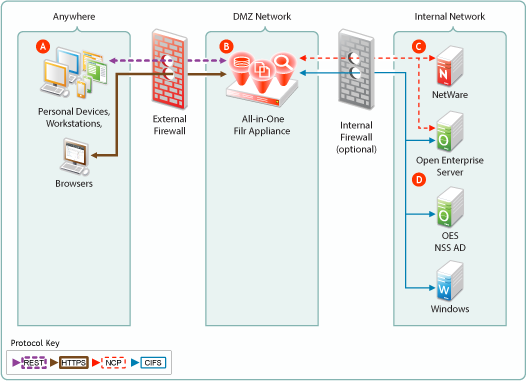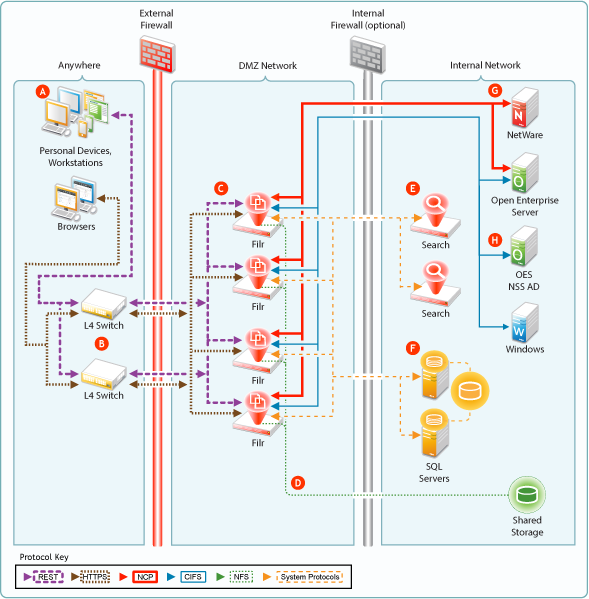2.5 Integrating Filr Inside Your Network Infrastructure
The following examples illustrate two possibilities out of many potential network configurations for deploying Filr.
2.5.1 A Small Filr Deployment
Figure 2-9 illustrates a high-level view of how an all-in-one appliance might be integrated into a small organization’s network. Each letter is explained in the table that follows the figure.
Figure 2-9 Example of a Small Filr Deployment

|
Letter |
Details |
|---|---|

|
Filr brings Novell and Windows file services to personal devices, Macintosh and Windows workstations, and Web browsers. |

|
Filr is built for fitting in with your security infrastructure and can be deployed in a DMZ network, allowing your organization’s data to remain safely inside your internal network. |

|
Filr provides full NCP protocol support. Users have access to files stored on both NetWare and Open Enterprise Server file servers. |

|
Filr provides full CIFS protocol support to servers providing CIFS file services, such as Windows file servers. |
2.5.2 A Large Filr Deployment
Figure 2-10 Example of a Large Filr Deployment

|
Letter |
Details |
|---|---|

|
Filr brings Novell and Windows file services to personal devices, Macintosh and Windows workstations, and Web browsers. |

|
You can use L4 switches to provide load balancing of REST requests to your Filr appliances. Although not shown, you can, of course, also use software-based load balancers for this. |

|
You can deploy Filr appliances inside a front-end DMZ and configure multiple Filr VAs to share NFS- of CIFS-based storage (D), thus providing scalability and high availability. |

|
Shared storage (/vashare) lets you expand your Filr deployment to include multiple Filr VAs (C). Although an exported NFS disk is shown in the illustration, CIFS shares are also supported. |

|
You can deploy multiple search appliances in an internal network, each of which maintains indexes of Filr data to provide failover for search and other requests coming through the Filr appliances. |

|
Your organization’s MySQL or MS SQL servers can be deployed in the internal network and configured to access the same database. |

|
As with small deployments, this configuration supports NCP file services. |

|
CIFS file services are also supported. |